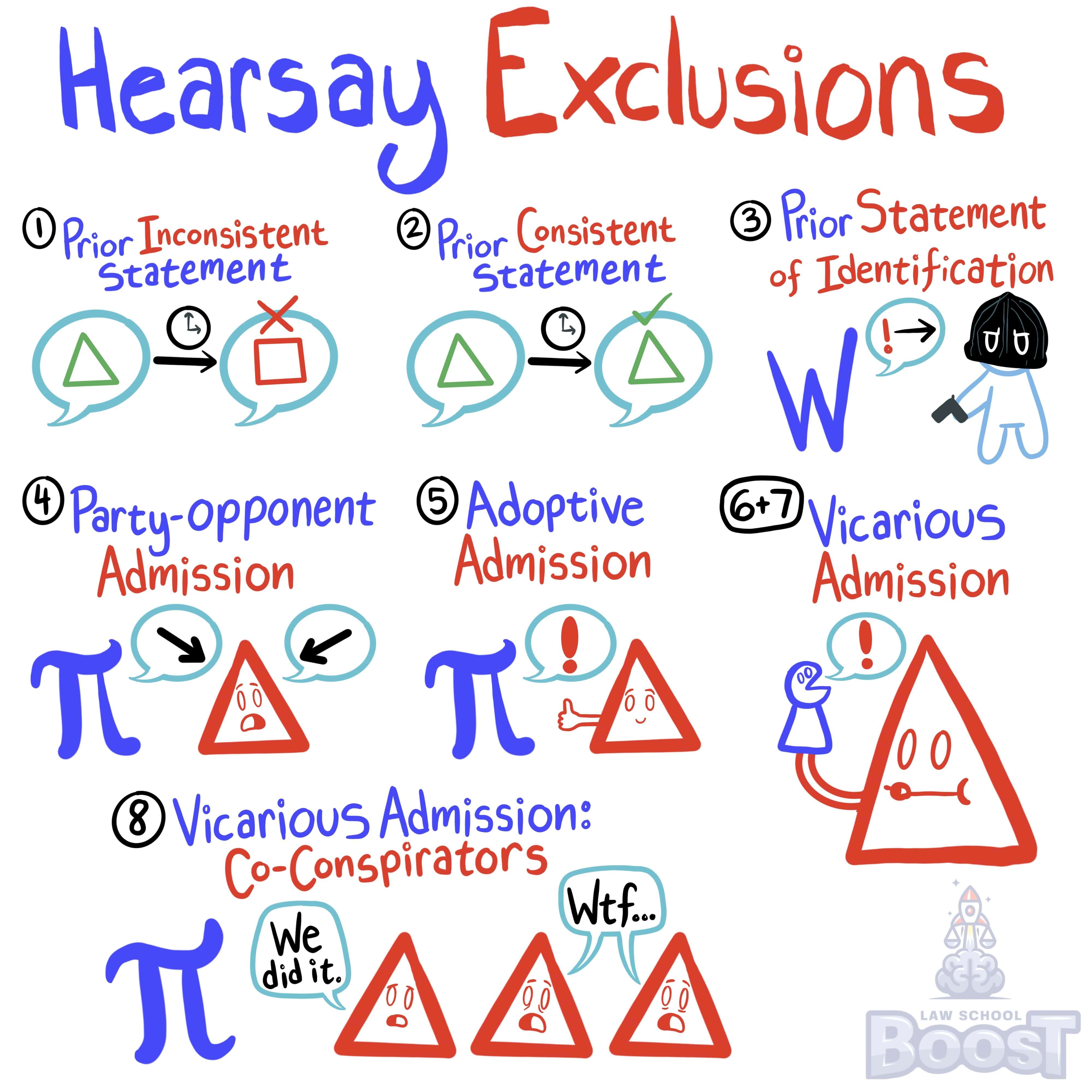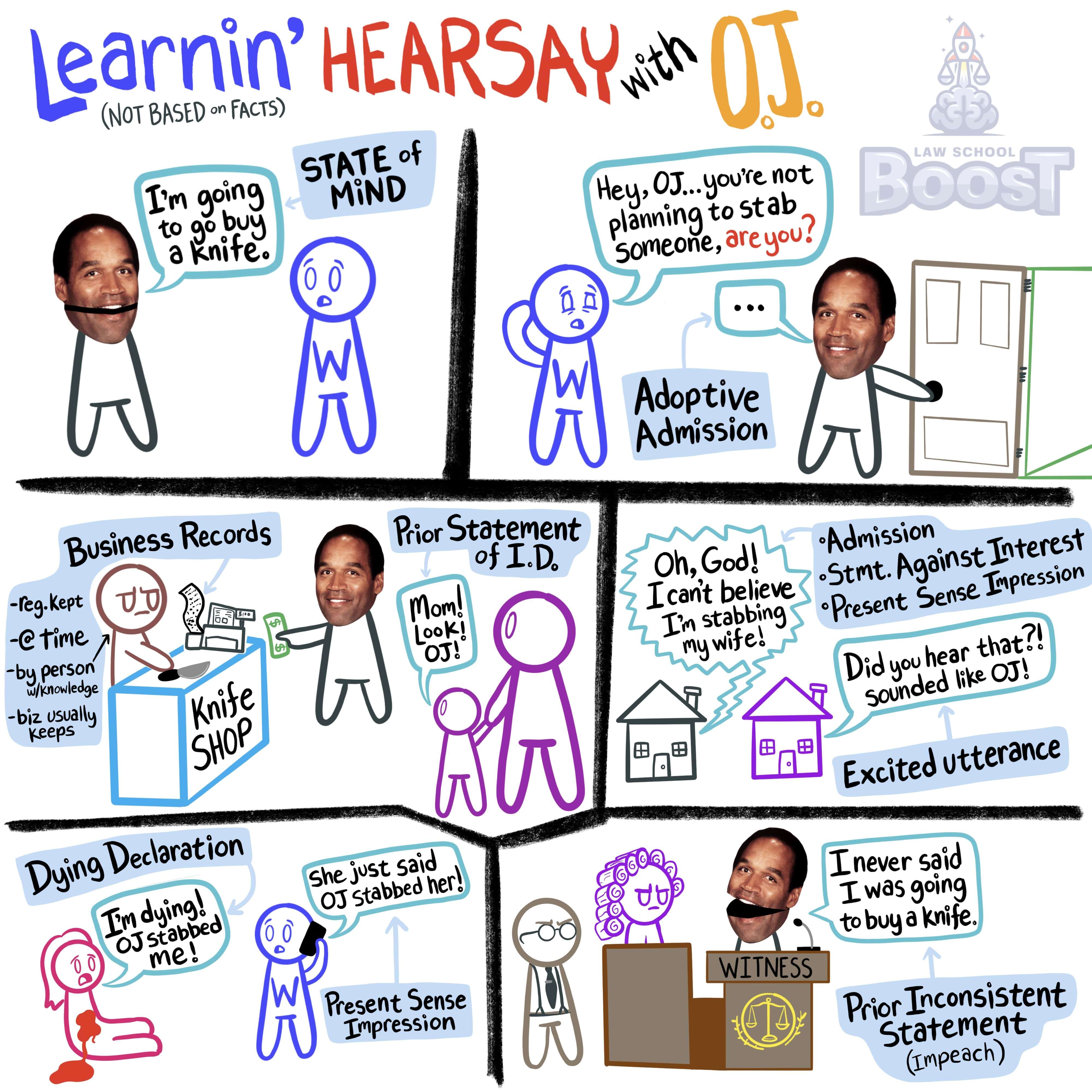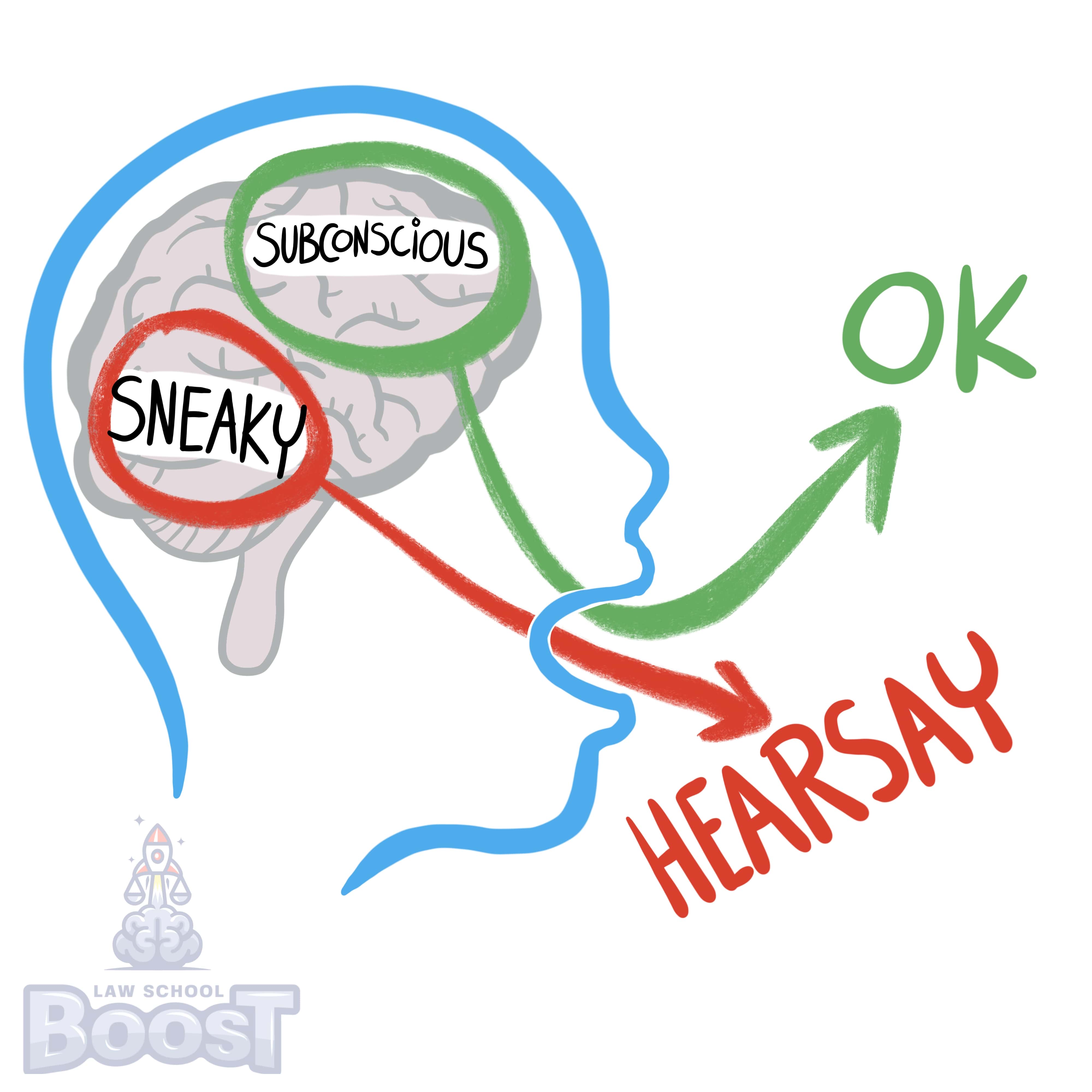🦅
Federal Evidence • Hearsay
EVID#016
Legal Definition
(1) Prior Inconsistent Statements
(2) Prior Consistent Statements
(3) Prior Statements of Identification
(4) Admission by Party-Opponent
(5) Adoptive Admission
(6) Vicarious Admission: Authorized Spokesperson
(7) Vicarious Admission: Principal-Agent
(8) Vicarious Admission: Co-conspirator
(2) Prior Consistent Statements
(3) Prior Statements of Identification
(4) Admission by Party-Opponent
(5) Adoptive Admission
(6) Vicarious Admission: Authorized Spokesperson
(7) Vicarious Admission: Principal-Agent
(8) Vicarious Admission: Co-conspirator
Plain English Explanation
We will be covering each of these exclusions in their own cards. For simplicity, here's an overview:
(1) Prior Inconsistent Statements: If a witness, like Bob, says something different in court than what he said before, his earlier statement can be used to show he might be lying now.
(2) Prior Consistent Statements: If someone accuses a witness of changing their story, their earlier, similar statements, like "I saw Bob at the scene," can be used to back up their credibility.
(3) Prior Statements of Identification: If a witness, like Sam, identified Bob in a police lineup before the trial but is unsure in court, the earlier identification can still be used.
(4) Admission by Party-Opponent: If Bob says something that goes against his interests, like admitting fault in a conversation, it can be used against him in court.
(5) Adoptive Admission: If Bob hears someone say, "You caused the accident," and he nods in agreement, it's as if he admitted it himself.
(6) Vicarious Admission: Authorized Spokesperson: If Bob's spokesperson makes a statement about the incident, it's treated as if Bob said it himself.
(7) Vicarious Admission: Principal-Agent: In a work setting, if Bob's employee, while working, says something about Bob's actions, it's as if Bob himself said it.
(8) Vicarious Admission: Co-conspirator: If Bob and Sam are planning a crime and Sam tells Amy about their plan, what Sam says can be used against Bob in court.
(1) Prior Inconsistent Statements: If a witness, like Bob, says something different in court than what he said before, his earlier statement can be used to show he might be lying now.
(2) Prior Consistent Statements: If someone accuses a witness of changing their story, their earlier, similar statements, like "I saw Bob at the scene," can be used to back up their credibility.
(3) Prior Statements of Identification: If a witness, like Sam, identified Bob in a police lineup before the trial but is unsure in court, the earlier identification can still be used.
(4) Admission by Party-Opponent: If Bob says something that goes against his interests, like admitting fault in a conversation, it can be used against him in court.
(5) Adoptive Admission: If Bob hears someone say, "You caused the accident," and he nods in agreement, it's as if he admitted it himself.
(6) Vicarious Admission: Authorized Spokesperson: If Bob's spokesperson makes a statement about the incident, it's treated as if Bob said it himself.
(7) Vicarious Admission: Principal-Agent: In a work setting, if Bob's employee, while working, says something about Bob's actions, it's as if Bob himself said it.
(8) Vicarious Admission: Co-conspirator: If Bob and Sam are planning a crime and Sam tells Amy about their plan, what Sam says can be used against Bob in court.
Visual Aids



Related Concepts
What are hearsay exclusions?
What are the California-specific hearsay exceptions requiring unavailability of the witness?
What are the California-specific hearsay exceptions that don't care whether the witness is available or not?
What are the Federal hearsay exceptions requiring unavailability of the witness?
What are the Federal hearsay exceptions that don't care whether the witness is available or not?
What is a hearsay exception?
What is hearsay?


